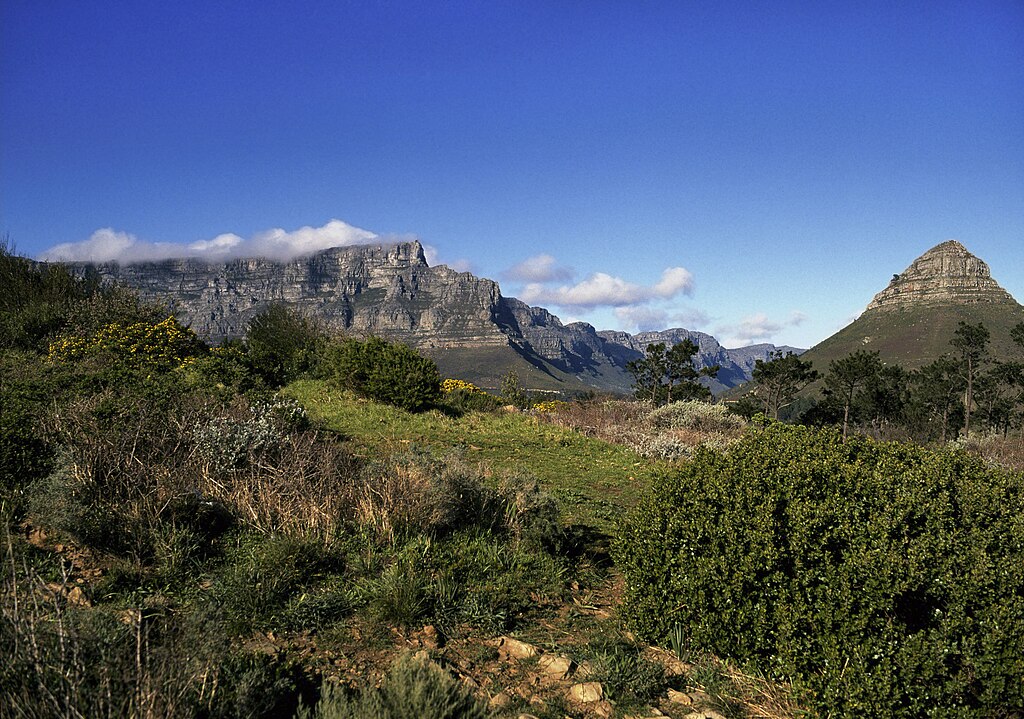Nestled at the southern tip of the African continent, overlooking the vibrant city of Cape Town, Table Mountain stands as a geological masterpiece and a beacon for sustainable tourism. This flat-topped mountain, a symbol of South Africa’s natural beauty, offers not only breathtaking vistas but also a blueprint for responsible travel. In this exploration, we delve into the ecological significance of Table Mountain, its role as a haven for biodiversity, and the measures in place to ensure its preservation amid a growing influx of visitors.
Table Mountain, with its distinctive flat summit, is a product of geological forces that have shaped the Cape region over millions of years. Composed mainly of sandstone and forming part of the Table Mountain Group, this iconic landmark stands at the intersection of diverse ecosystems, creating a haven for an array of plant and animal species.
The mountain is not merely a geological marvel but a testament to the delicate balance between human interaction and environmental preservation. Understanding its ecological significance is crucial to appreciating the efforts in place to safeguard this natural wonder.
Table Mountain’s flat top, or “mesa,” is home to a rich tapestry of plant life known as fynbos. This unique vegetation, comprising over 2,200 plant species, many of which are endemic to the region, contributes to the mountain’s designation as a UNESCO World Heritage Site.
Dr. Zanele Magwaza, a leading South African botanist, highlights the importance of preserving this biodiversity, stating, “Table Mountain is a botanical treasure trove, hosting plant species found nowhere else on Earth. Protecting its delicate ecosystems is not just a local responsibility but a global imperative for biodiversity conservation.”
With its allure drawing millions of visitors each year, Table Mountain faces the challenge of balancing tourism with conservation. The Table Mountain Aerial Cableway, a popular means of reaching the summit, transports over a million passengers annually. The management, recognizing the impact of this footfall, has implemented a range of measures to ensure responsible tourism.
One of the key initiatives is the adoption of a reservation system for cable car tickets. This not only regulates the number of daily visitors but also allows for a smoother flow, minimizing congestion and reducing the ecological impact on the mountain’s delicate ecosystems.
To understand the success of sustainable tourism on Table Mountain, let’s delve into the data. According to a report by the South African National Parks agency, the implementation of visitor management strategies has resulted in a 15% decrease in the ecological footprint associated with tourism over the past five years. This reduction is a testament to the effectiveness of measures such as guided tours, educational programs, and waste management initiatives.
Furthermore, the economic benefits generated by tourism are reinvested in conservation efforts. The revenue generated from cable car tickets, guided tours, and merchandise contributes to initiatives focused on alien vegetation control, trail maintenance, and scientific research to enhance our understanding of the mountain’s ecosystems.
Despite the success in managing tourism sustainably, Table Mountain faces ongoing challenges. Climate change, invasive species, and increased urbanization in the Cape Town area threaten the delicate balance that sustains this natural wonder. The Table Mountain National Park Authority collaborates with environmental organizations and local communities to address these challenges and develop adaptive strategies.
The “Friends of Table Mountain” initiative, a community-driven conservation effort, engages local residents in environmental stewardship, promoting a sense of responsibility for the mountain’s well-being. Initiatives like these play a crucial role in ensuring that Table Mountain remains a symbol of ecological resilience amid global environmental challenges.
In conclusion, Table Mountain stands not just as a geological marvel but as a model for responsible and sustainable tourism. Its unique ecosystems, rich biodiversity, and commitment to visitor management showcase the delicate balance that can be achieved between human enjoyment and environmental preservation.
As travelers seek meaningful and eco-conscious experiences, Table Mountain offers a narrative of coexistence, where responsible tourism becomes a tool for conservation rather than a threat to nature. In the grandeur of Table Mountain, we find not just a destination but a testament to the possibilities of harmonizing human exploration with the imperative to protect our planet’s natural wonders.
Photo credit: Godot13, CC BY-SA 3.0, via Wikimedia Commons


